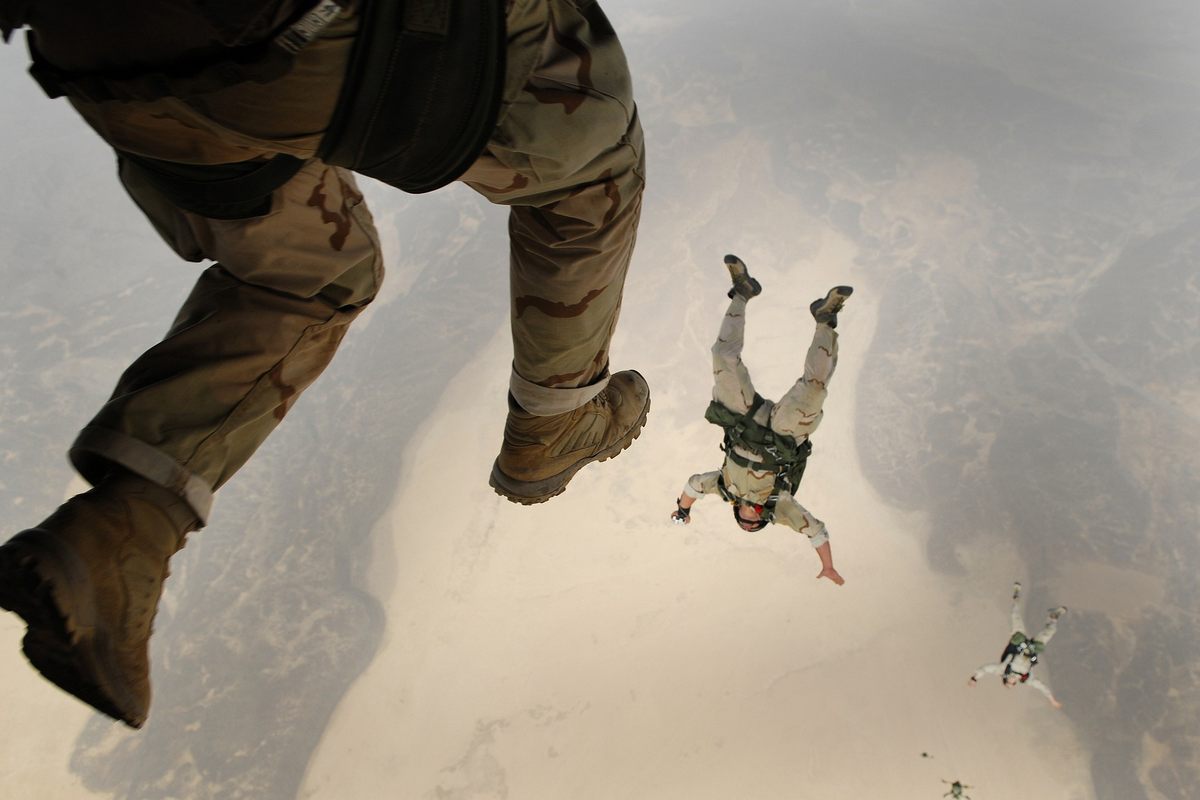How Long Is a Moment?
The physics, neuroscience, linguistics, and philosophy behind a little bit of time.
When you take “a moment to think,” how long do you need? “In a moment” probably means quite soon. “For a moment” is somehow instantaneous—a flash of misunderstanding or emotion that passes like a gust of wind. “At the moment” refers to an indefinite period of time: however long now is, or until something changes. “At any moment” is a rolling succession of distinct hypotheticals, like beads on a string. And when you’re “in the moment,” you act without regard to time. You often know when “the moment has passed,” but can you say how long it was, or precisely when it ended? The Oxford English Dictionary lists nearly a dozen idioms that pivot around the word “moment.” Each suggests something slightly different.
At this point, medievalists are probably rolling their eyes. For centuries, and as late as the early 19th century, a “moment” was something quite specific—a 40th of an hour, or around 90 seconds. But modern English doesn’t treat the word this way. It can mean the barest speck of time or it can stretch over hours, days, weeks—with so many different meanings that trying to pin it down might seem a fool’s errand. Sometimes, simply changing “a” to “the” truncates moments to instantaneity: “I seized the moment,” “The moment had come,” “That was the moment I knew.”
In this last subset of moments—the quick ones, the instants, the markers of some kind of change—perhaps there is something to understand about how we perceive time. The moment the wheel began rolling down a hill. The moment the woman finished her drink. The moment I woke up this morning. What are these moments? Are they singular, discrete? Are they all the same? When do they begin and end? How long is a moment?

Time, even in its most fiat-based forms, is a slippery beast that seems to defy our attempts to define, cage, contain, and regulate it. Bringing into focus something that is, at once, as precise and fuzzy as a moment means taking a closer look at what time is and how we understand it, through linguistic, scientific, neurological, and philosophical lenses.

In Boulder, Colorado, the National Institute of Standards and Technology is doing their best to keep track of time. There, enormous cesium fountain clocks use atomic properties to set the time across the United States. These clocks—generators, really, says John P. Lowe, an engineer in Time and Frequency Services—are amazingly accurate, and will run, and run, and run. Since 1967, we’ve used these to define seconds in terms of the predictable cesium atom: A second is the amount of time it takes for 9,192,631,770 cycles of radiation corresponding to how cesium vibrates between two energy states. It works well, but the rest of our temporal system gets more and more complicated as it scales and we reconcile the atomic and cosmic, requiring tiny adjustments along the way.
We all know, for instance, that a day is the time it takes for the Earth to rotate once around its own axis. But a day isn’t exactly 24 hours and, due to the gradual slowing of the Earth’s rotation, these are getting longer all the time. “The cosmos doesn’t cooperate,” says Lowe. When dinosaurs were last on the planet, a single rotation of the Earth took about 23 hours. In 200 million years’ time, it will be 25 hours (and a year will be 335 days).
Seemingly insignificant factors mess with our timekeeping, too. Because most of the world’s landmass is in the northern hemisphere, Lowe says, heavy winter snowfall can impact how quickly the Earth rotates in certain months. “It’s like a skater putting their arms out—all the snow gets accumulated to higher and higher altitudes, and you can physically see the Earth slow down,” he says. “And as that snow melts and recedes back down into the ocean, the Earth will speed back up a little bit again, just like a skater pulling their arms in.”
For all these reasons and more, some years are granted one more second from the world’s timekeeping authorities, in the final moments of June or December. On December 31, 2016, official clocks registered an extra second, just before the end of the year—23:59:60 appeared just between 23:59:59 and 00:00:00. (End-of-year revelers are likely to have missed that extra 9,192,631,770 cesium radiation cycles.) This has happened 27 times since 1972.
All of this reveals the imperfection in how we would even attempt to measure the length of a moment—and how arbitrary that scale happens to be, Lowe says. For all the precision of cesium, the exact number of radiation cycles we’ve chosen for a “second” is random. “The decision to make the second ‘1001, 1002’ …” he says, rattling off the numbers quickly, like artillery fire. “We can easily make a second last for longer.” He stretches them out, like saltwater taffy: “One-thousand-one.” Pause. “One-thousand-two.” Official, scientific time, this is to say, has little input on the length of a moment—because time belongs not to the atom or the universe, but to us.

Timekeepers work to make our clocks make sense, in a way that is objective, if arbitrary. So, too, do our brains try to provide a coherent, if subjective, understanding of temporal reality. There’s no single place in the brain where time perception takes place, and information comes in from lots of different places at lots of different times, and at lots of different speeds.
Neuroscientist David Eagleman describes the brain as working a bit like a video editing station, doing a ton of work that we don’t notice to make up every instant that we think of as now. “It’s got this job of stitching together all the different information it’s got, coming in at different times, and it has to put it all together,” he says. “So the end result is that we live in the past and actually what seems to be happening in one moment may actually be kind of stitched together.” Signals from your feet, for example, take longer to reach the brain, as they navigate distal nerves and the spinal cord, than signals from your face. But your brain doesn’t perceive this difference, or edits it out.

Your brain is doing more than playing traffic cop with stimuli. “There are all these different facets of time that we have,” Eagleman says, “like how long something lasted, or which thing happened first, or how fast this thing is flickering.” Each of these perceptions is managed by an independent brain mechanism, he says. “Yet we have this sense that time is just flowing along, and that we understand it. In fact, we have a single word to represent all these different things—all these aspects of ‘time’—yet we just have a single word for it.”
According to neuroscientists, all of these brain mechanisms mean that we live ever-so-slightly in the past—a half-second, in fact. The present that your brain comprehends is around 500 milliseconds behind what is actually “happening,” as your brain scrambles frantically to keep up and maintain coherence (with greater or lesser efficacy, depending, perhaps, on coffee intake). Even when you observe moments happening, you’re doing so in retrospect. The world is only ever seen in hindsight.
Take snapping your fingers. It might seem instantaneous, and is a sort of shorthand for something that happens in a moment. Instead, it is like live television with a short delay. By the time your brain has processed the command to move your fingers, the visual of your middle finger sliding down your thumb, the feeling of that finger striking the corner of your palm, the vibrations of your eardrum from sound waves in the air—all passing through nerves like electricity through copper wire—the snap has long since come and gone. All these stimuli seem to be happening simultaneously, even though they aren’t. And your brain is rewriting this perception in the moments between when it occurs and when the stimuli are threaded together. “Your perceptual world always lags behind the real world,” he says.
The lag is further complicated by what our brains know about causality and anticipation—and that any given perceived moment is influenced by what happens before and after it. “The part that we fall for … is that there are these crisp moments in time, instead of blurry,” Eagleman says, “which is to say, you know, if you’re incorporating information from the past and also from what happens next in an event, it means that the moment ‘now’ is not a crisp moment in time. It’s actually smeared out, over at least a half a second, maybe longer.”
So not only do moments not happen when we think they do, their start and end points are far more slippery than we realize. The bottom line, Eagleman writes in his book Incognito: The Secret Lives of the Brain, is that time is a mental construct, and not “an accurate barometer of what’s happening ‘out there.’” Though, in the scientific sense, time is something like a river that we course down (even though relativity makes it a rather weird river), our brains also seem to be in the process of actively constructing it. And this makes placing markers down within it—a moment, an instant, now—difficult.

This all bring us back to the nature of a “moment,” which seems to be more a linguistic construct than a physical or perceptual one. Language is squishy. That flexibility is an advantage, surely—literature would suffer without it—but sometimes it makes specificity, about time or anything else, elusive. Linguists frame this with talk about “events” and “states.”
Events are things that can “happen.” They’re dynamic (something does something to something else), often depict a change, and usually have an active agent. There are events that are interpreted as single points or moments, and others that are continuous series of them, and the differences between them reveal the complexity in what appear to be simple ideas. “Jane finished building her house,” appears to describe the moment at which an action was completed. But which moment was that? Did Jane just straighten one last wonky roof tile, or did she just rough out the exterior of a new wing? When is the building actually complete? As decisive as “finished” seems, it’s frustratingly vague.
States, explains Daniel Altshuler, a linguistics professor at Hampshire College, Massachusetts, “aren’t things that are changing.” Some are more or less permanent. “The state of ‘one plus one equals two’ lasts forever. That’s not something that changes over time.” But it might have had a moment—the beginning of the universe, say—when it came into being. Other states are obviously temporary, with beginnings and ends, like being drunk or young or happy. “If I told you that yesterday I was anxious,” Altshuler says, “intuition tells us there was a first moment where I became anxious and a last moment where I ceased to be anxious. But then you might go a little bit further and be like, ‘What is that moment, and how can you tell?’ It would be way too small, and really not something that we could easily perceive.”

Exactitude is an elusive, impossible quarry. In his Physics, Aristotle puzzles over this question, putting it in terms of change and motion. How can you know the first point at which something is moving? By his reasoning, a change in state—from still to moving, for example—can’t be instantaneous. Instead, it must occur over some tiny interval.
In short, there’s no amount of time so small that you can’t conceptually “zoom in” on it. Every interval is made up of smaller and smaller sub-intervals, in the same way that there are an infinite number of values between 1.1 and 1.2. Time, Aristotle argues, works in a similar way. The sequence of temporal points is asymptotically dense—for any two points, no matter how close, there is a point in between them. To follow his reasoning, moments are simply intervals, getting vanishingly smaller. And, before our eyes, the moment disappears—no beginning, no end, only an idea, a before and an after.
For all their explanatory power, physics, neuroscience, linguistics, and philosophy can’t agree on an understanding of time—or what mechanism of time a moment might represent, if it exists at all. A physical second may overlap with a cognitive moment, but they’re not equivalent, they feel different, and they can’t be described with the same set of words or concepts.
The imprecision of language is both useful and maddening, and there are cases in which it is simply unequal to the task of understanding. It’s almost as if these “moments,” in all the ways that we mean them, are happening in many different worlds at once: the atom, the clock, the unconscious mind, the conscious mind, the symbols and signs of complex language. The length of a moment is an undefinable quantity and an unsolvable problem. But it may be one worth taking a moment—or a while—to consider.








Follow us on Twitter to get the latest on the world's hidden wonders.
Like us on Facebook to get the latest on the world's hidden wonders.
Follow us on Twitter Like us on Facebook